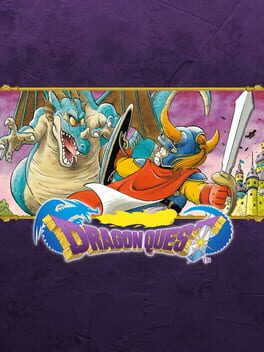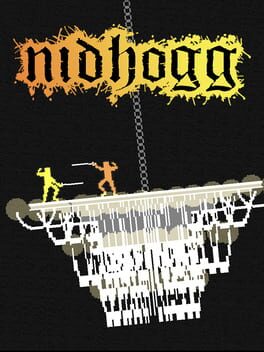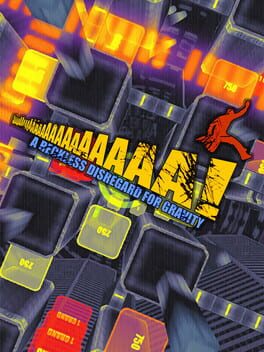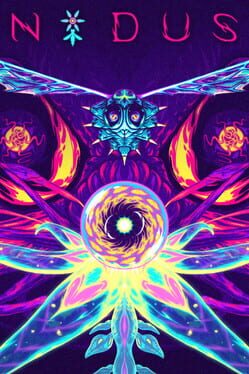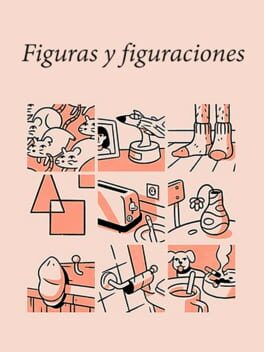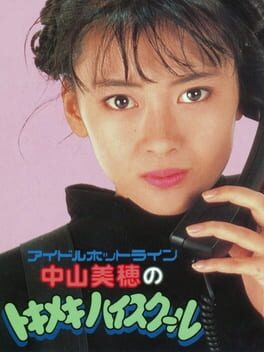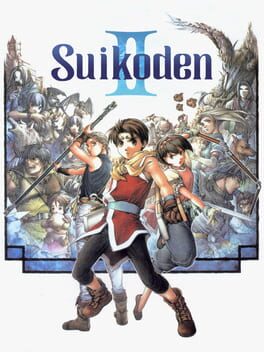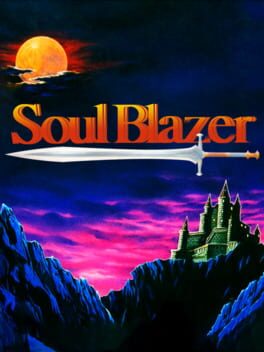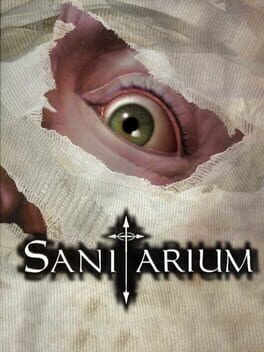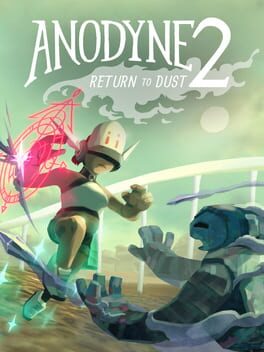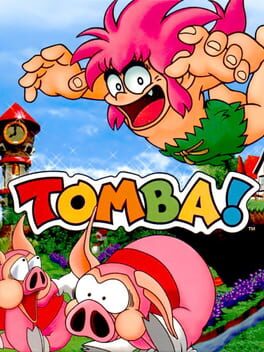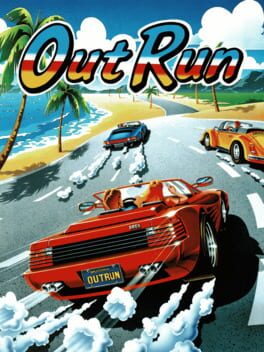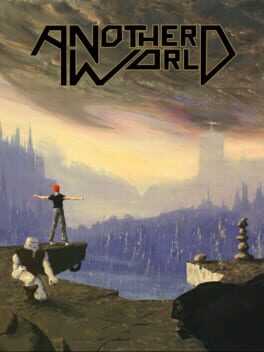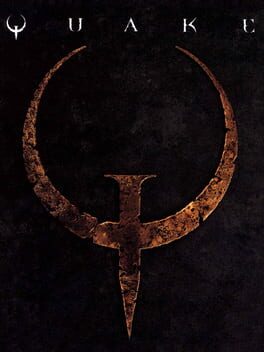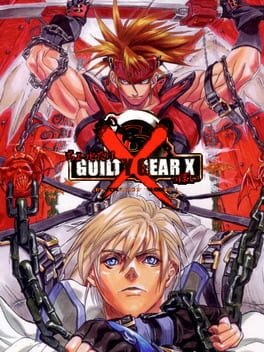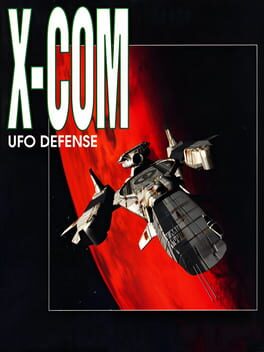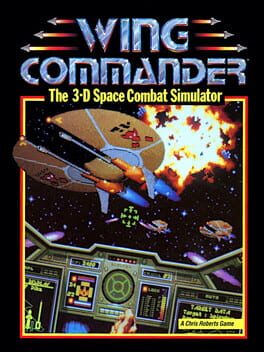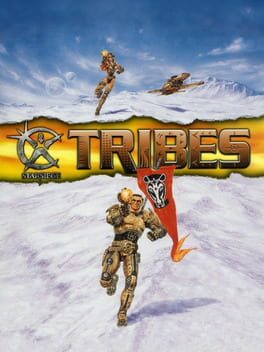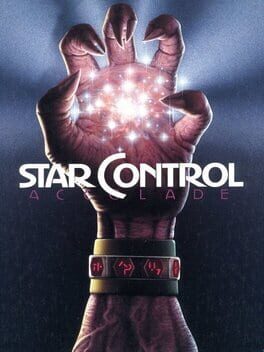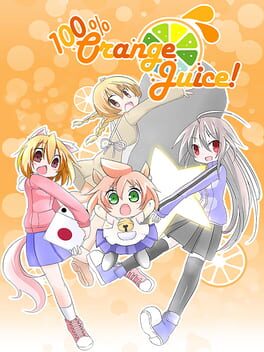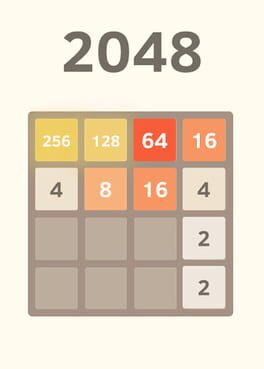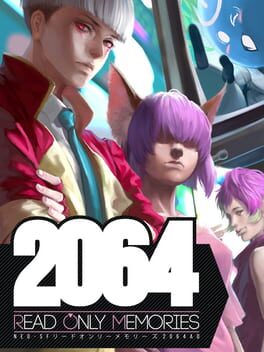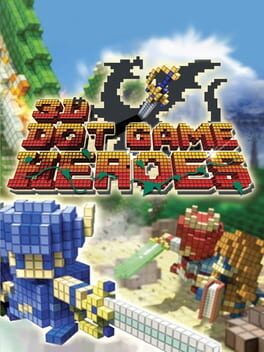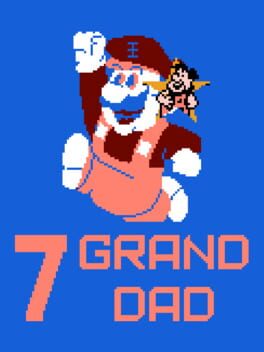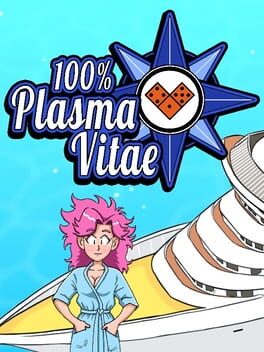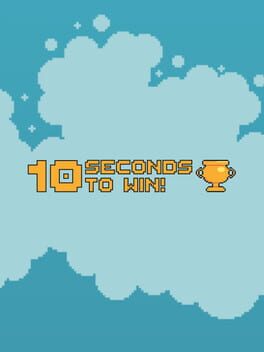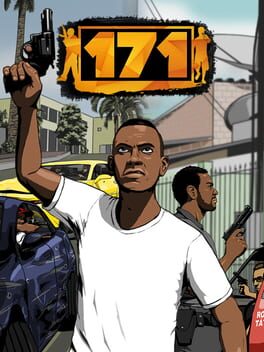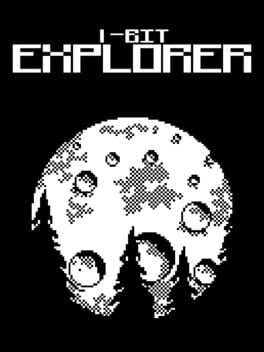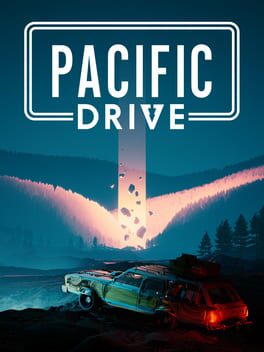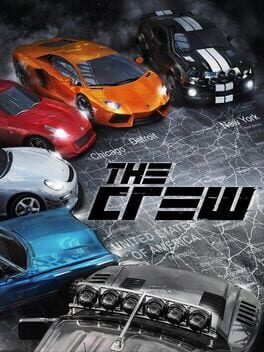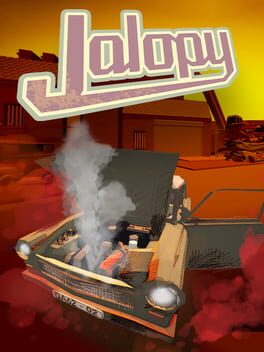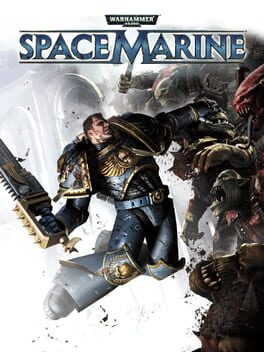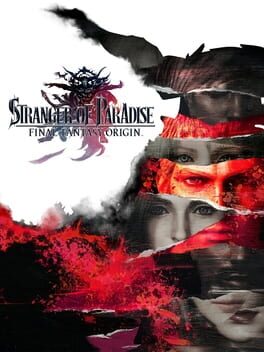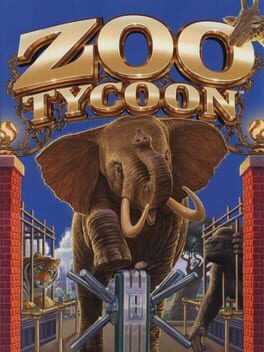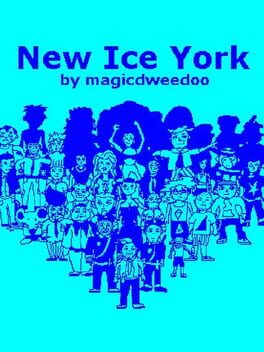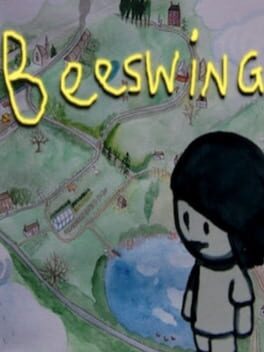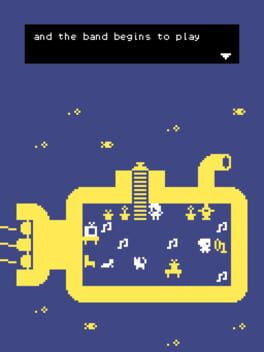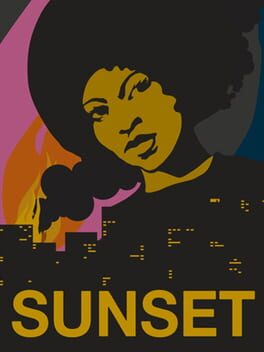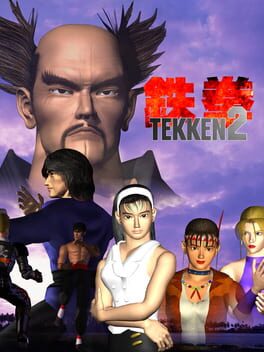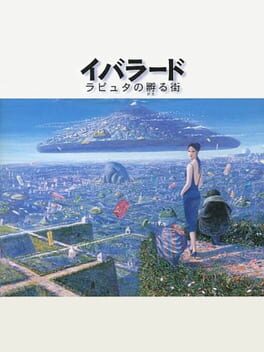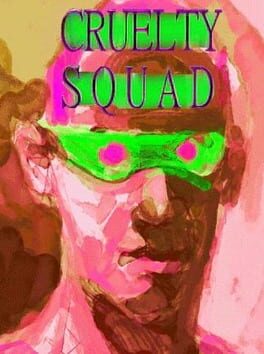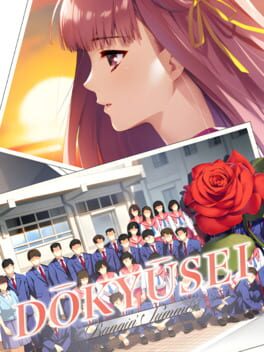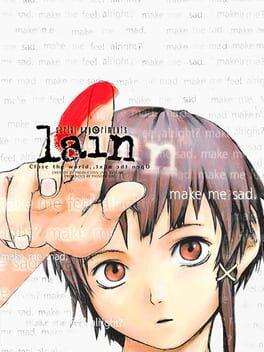judgerussell
37 reviews liked by judgerussell
Donkey Kong Country
1994
i feel no hesitation in saying that donkey kong country is my favorite game from the golden age of platformers; hell, my favorite platformer ever. every word of impossible nostalgia-drunk exaltation spilled from the mouths of nintendotubers over the snes drivel they grew up with is fulfilled in dkc's pre-rendered 3d glory. fuck mario. this is what they told me smw would be like. even the water levels are good. if this game didn't play like a dream- constantly challenging you, though never unclear of its expectations or punishing with its lives- it would still have more style than pretty much any game in its genre released then or now. such technical wizardry was performed here that the game's assets and soundtrack look and sound somehow worse uncompressed. every level is a real place and i want to be there. aquatic ambience is cited incessantly in "greatest ost" lists for good reason. rare's nintendoid output would only improve (see: the sequel to this game), but this will always be their greatest achievement in my eyes. it was here first. it came and it conquered. shine on, you crazy kong.
Yume Nikki
2004
Dragon Quest
2004
You know how it is. The most an artist's death has gotten me to cry in a long time - the infectious creative energy I've felt lent down to me from his work is something that'll never leave me. And just like everyone else, I've found myself pouring through dozens and dozens of heartfelt tributes to the man's legendary career. But reading it all got me thinking...ain't the meat and potatoes reputation Dragon Quest has earnt itself kind of like, an error? An impossibility?
So, lemme ask you a question: when's the first time you saw something that made you think "Dragon Quest is cool"? I couldn't tell you what mine was, but recently finishing a full playthrough of the original NES Dragon Warrior pulled me back into the correct reality in which this series was not "generic", but an outlier in style. Toriyama's enthusiasm to play the hits puts the personality on display in its monsters maybe 20 years ahead of the curve. As an aside, I also recommend to anyone playing any older Dragon Quest to look up some scans of the old manuals; the effortless coolness of his artstyle had already bled into DQ's identity.
You could call this game a "grind", but the grind is the gameplay and the gameplay is good. Each individual battle is simple to solve in a bubble, but enemies are split between the ones you can defeat with or without expending resources - instantly spiraling the world into an ever-evolving puzzle to solve. Planning out a trajectory of travel immediately prompts a dizzying amount of dice rolls in your head: how many resources should I spend to gain EXP? How much should I dice roll running away, and how much magic will I have left to heal myself up considering both the expected and unexpected outcomes? Inner workings filled with perfect math to never quite satisfy things with a clear answer; but what raises this from good to great is how through my entire time playing the game, I always undershot my potential. Enemies that are apparently stronger than you can be taken down with perfect resource management, finding consistency in a haze of lottery tickets that makes you feel genius every time you take one down and keep a little more magic for the rest of the trip than your last encounter with the same guy.
And in comparison to how grinding is often characterized as a boring chore-like task, I think playing this game is way closer to exhausting - you can do a good run, and do another, and then lose to a Skeleton you've already defeated 10 times and now half your gold is gone. You probably haven't even made it halfway to the level you want yet! But for every moment of flighty confusion, there's also a moment where you get to level 3, gain heal, and kill the first slime you see in one hit.
and that's how they get you
Random encounters are most frequently characterized as one of those unsavory bits of RPG we chop off, but playing this helped click into place how much texture can be applied to identical floor tiles simply by the difference in looming threat. The invisible encounter sheet constantly shifting under your feet giving cool and hostile sensation to each step, and when you realize you can kill something that once scared you off, the level design changes. Reinforces the process of seamless non-linear exploration with an information game unique to the format - a grind made engaging by the real question being where to even grind in the first place. This is an RPG with no vestigial limbs. Every single part of an RPG you've questioned the integral elements of is present working in perfect harmony with each other; last year, I found myself actively frustrated playing a newly released turn-based RPG in which the mindlessness of each individual encounter serves no purpose. Without long-term resource management, of course random encounters are boring! Or, in contrast to RPGs where levels feel like guided progress, here, lower level enemies to begin to run away, breaking the consistency of previously successful sources of experience and gold. Now, with every moment of newly found strength matched by a push out of my comfort zone, I'm like "ohhh i get it now"
and they got me
This is all coming from a relatively young person's perspective (i turned 22 around when i wrote most of this happy birthday me :D ), so there's this tough balance to reach when it comes to simultaneously embracing that sometimes, traits of oldness are endearing to me, and making sure I don't sound like I am looking down on something, or it's a novelty.
In the past few months, I ended up playing a bunch of games from the mid-late 2000s, and it was easy to lose yourself in a sea of fifteen year old Gamefaqs threads, and chat with people just a bit older than me who experienced all these things organically in their childhood. Especially due to growing up with games from the same era, it was easy for me to imagine myself playing these as a kid, wondering how this could've effected me sooner. Dragon Quest on the contrast is for a bit older of a generation than me, especially with some of its strongest cultural imprint existing beyond language barrier. I played this alongside someone close to me - we honestly couldn't stop gushing to each other about how satisfying the sleuthing was as we kept a million notes marked down. There's a great moment in which a secret that's visibly hinted to you in one of the last towns has an equivalent but invisible secret in one of the first towns; this is one of the oldest games I've played with a strong design language. Things like this got us close to that ideal you hear of pen and paper hint tracking. Eventually, it became natural to feel like playing the game like this was making me fall into the past footsteps of someone else; it's hard not to romanticize it like we were 2 little kids playing the game lit by nothing but the humming static of a CRT. And even though I've literally known people not even a decade older than me that grew up with this game, it's immersing myself in a distinctly different time-frame from usual that makes that era feel so far away. It's that solidarity with a perspective just out of reach that starts positively haunting the game with the ghost of lived experience.
So, lemme ask you a question: when's the first time you saw something that made you think "Dragon Quest is cool"? I couldn't tell you what mine was, but recently finishing a full playthrough of the original NES Dragon Warrior pulled me back into the correct reality in which this series was not "generic", but an outlier in style. Toriyama's enthusiasm to play the hits puts the personality on display in its monsters maybe 20 years ahead of the curve. As an aside, I also recommend to anyone playing any older Dragon Quest to look up some scans of the old manuals; the effortless coolness of his artstyle had already bled into DQ's identity.
You could call this game a "grind", but the grind is the gameplay and the gameplay is good. Each individual battle is simple to solve in a bubble, but enemies are split between the ones you can defeat with or without expending resources - instantly spiraling the world into an ever-evolving puzzle to solve. Planning out a trajectory of travel immediately prompts a dizzying amount of dice rolls in your head: how many resources should I spend to gain EXP? How much should I dice roll running away, and how much magic will I have left to heal myself up considering both the expected and unexpected outcomes? Inner workings filled with perfect math to never quite satisfy things with a clear answer; but what raises this from good to great is how through my entire time playing the game, I always undershot my potential. Enemies that are apparently stronger than you can be taken down with perfect resource management, finding consistency in a haze of lottery tickets that makes you feel genius every time you take one down and keep a little more magic for the rest of the trip than your last encounter with the same guy.
And in comparison to how grinding is often characterized as a boring chore-like task, I think playing this game is way closer to exhausting - you can do a good run, and do another, and then lose to a Skeleton you've already defeated 10 times and now half your gold is gone. You probably haven't even made it halfway to the level you want yet! But for every moment of flighty confusion, there's also a moment where you get to level 3, gain heal, and kill the first slime you see in one hit.
and that's how they get you
Random encounters are most frequently characterized as one of those unsavory bits of RPG we chop off, but playing this helped click into place how much texture can be applied to identical floor tiles simply by the difference in looming threat. The invisible encounter sheet constantly shifting under your feet giving cool and hostile sensation to each step, and when you realize you can kill something that once scared you off, the level design changes. Reinforces the process of seamless non-linear exploration with an information game unique to the format - a grind made engaging by the real question being where to even grind in the first place. This is an RPG with no vestigial limbs. Every single part of an RPG you've questioned the integral elements of is present working in perfect harmony with each other; last year, I found myself actively frustrated playing a newly released turn-based RPG in which the mindlessness of each individual encounter serves no purpose. Without long-term resource management, of course random encounters are boring! Or, in contrast to RPGs where levels feel like guided progress, here, lower level enemies to begin to run away, breaking the consistency of previously successful sources of experience and gold. Now, with every moment of newly found strength matched by a push out of my comfort zone, I'm like "ohhh i get it now"
and they got me
This is all coming from a relatively young person's perspective (i turned 22 around when i wrote most of this happy birthday me :D ), so there's this tough balance to reach when it comes to simultaneously embracing that sometimes, traits of oldness are endearing to me, and making sure I don't sound like I am looking down on something, or it's a novelty.
In the past few months, I ended up playing a bunch of games from the mid-late 2000s, and it was easy to lose yourself in a sea of fifteen year old Gamefaqs threads, and chat with people just a bit older than me who experienced all these things organically in their childhood. Especially due to growing up with games from the same era, it was easy for me to imagine myself playing these as a kid, wondering how this could've effected me sooner. Dragon Quest on the contrast is for a bit older of a generation than me, especially with some of its strongest cultural imprint existing beyond language barrier. I played this alongside someone close to me - we honestly couldn't stop gushing to each other about how satisfying the sleuthing was as we kept a million notes marked down. There's a great moment in which a secret that's visibly hinted to you in one of the last towns has an equivalent but invisible secret in one of the first towns; this is one of the oldest games I've played with a strong design language. Things like this got us close to that ideal you hear of pen and paper hint tracking. Eventually, it became natural to feel like playing the game like this was making me fall into the past footsteps of someone else; it's hard not to romanticize it like we were 2 little kids playing the game lit by nothing but the humming static of a CRT. And even though I've literally known people not even a decade older than me that grew up with this game, it's immersing myself in a distinctly different time-frame from usual that makes that era feel so far away. It's that solidarity with a perspective just out of reach that starts positively haunting the game with the ghost of lived experience.
Nidhogg
2014
I and the person I love most are nearly perfectly matched in this and it's brought some of the most raw, unfiltered joy I've experienced playing a video game. There's so much room for natural discovery and the actions are so dead-simple that you cut right through to the multilayered rock paper scissors and personal metagaming that make traditional fighting games so satisfying in their best moments. The levels pulsate and warp and sway in the most hypnotic ways and you're locked together running back and forth and back and forth in a dance that seems to never end and you are wholly consumed by the game and the person you're sharing it with and you approach that kind of momentary inner quiet you thought you'd never have again even as you're involuntarily shouting from impaling yourself again by diving in when your opponent was just standing still.
I'm 100% sure if I go out and look for it I'll find strategies, tech, and optimization which take away from that feeling of discovery and replace it with a tighter grasp on the mechanics bringing you and the opponent closer in a different way, but I'm not gonna let the optimization virus get this one unless I work my way there myself. There's something to be said for the maximum-information environment that is the default for any game nowadays, but there's also something beautiful about the high speed improv of a low information closed system of two players who don't have any idea how other people play it.
Ask yourself: in the past 15 or so years, how many times have you had the opportunity to feel like a multiplayer game is something between you and the people close to you, not really knowing or caring how others play it or what the "right" way to do it is?
I'm 100% sure if I go out and look for it I'll find strategies, tech, and optimization which take away from that feeling of discovery and replace it with a tighter grasp on the mechanics bringing you and the opponent closer in a different way, but I'm not gonna let the optimization virus get this one unless I work my way there myself. There's something to be said for the maximum-information environment that is the default for any game nowadays, but there's also something beautiful about the high speed improv of a low information closed system of two players who don't have any idea how other people play it.
Ask yourself: in the past 15 or so years, how many times have you had the opportunity to feel like a multiplayer game is something between you and the people close to you, not really knowing or caring how others play it or what the "right" way to do it is?
Un juego muy entretenido, aunque algo limitado. La presentación hace mucho por meterte en una dinámica gamberra que, pese a suceder en Boston, me hace pensar en todos aquellos juegos británicos de los noventa que iban de romper cosas y faltarle el respeto a la autoridad.
Su principal escollo es que, para lo complejo y variado que llega a ser, el ritmo de juego se queda un poco corto a la hora de ofrecerte escenarios interesantes. Demasiadas veces da la impresión de que estás en un mapa completamente nuevo y acaba resultando ser el mismo reto con assets diferentes. Más allá de eso, tratar de llegar a las 5 estrellas me frustró pero tampoco pude parar hasta conseguirlo. Algo bueno tendría que estar haciendo para animarme de esta forma.
------------------
A very entertaining if somewhat limited little game. The presentation does a lot to get into a hooligan mindset. Despite taking place in Boston, it really looks like those 90's British games that were all about looking cool and sticking it to the man.
Its main drawback is that despite the game's variety, its rhythm falls a little short. Too many times it feels like you're doing the same challenge with slightly different assets. Beyond that, getting all 5 stars was frustrating but I couldn't put the game down until I did it, so there must be something worthwhile in here.
Su principal escollo es que, para lo complejo y variado que llega a ser, el ritmo de juego se queda un poco corto a la hora de ofrecerte escenarios interesantes. Demasiadas veces da la impresión de que estás en un mapa completamente nuevo y acaba resultando ser el mismo reto con assets diferentes. Más allá de eso, tratar de llegar a las 5 estrellas me frustró pero tampoco pude parar hasta conseguirlo. Algo bueno tendría que estar haciendo para animarme de esta forma.
------------------
A very entertaining if somewhat limited little game. The presentation does a lot to get into a hooligan mindset. Despite taking place in Boston, it really looks like those 90's British games that were all about looking cool and sticking it to the man.
Its main drawback is that despite the game's variety, its rhythm falls a little short. Too many times it feels like you're doing the same challenge with slightly different assets. Beyond that, getting all 5 stars was frustrating but I couldn't put the game down until I did it, so there must be something worthwhile in here.
ActRaiser
1990
I'm a big fan of genre mashups. For a while now, the best way to get my attention and stand out from within the neverending tide of new releases is to do "genre 1 + genre 2" to make combinations I haven't seen before. Sometimes these result in great new games that do something innovative, and sometimes they produce an incoherent mess, or just an underwhelming experience. And whilst I associate most of this school of design with modern indie games, I knew that they certainly weren't the inventors of this approach; and I thought I had to pay my respects to the OG weird genre mashup : Actraiser (and yeah I know there were weird genre mixes even further back depending on what you count but remember that video game genres are bullshit anyways so its fine)
The strength of a hybrid gameplay model is 2 fold. One is that its an in-built tool for pacing wherein one mode is a nice change of pace/a break from the other. Though more conventional, games like Persona (3 onwards), XCOM, Recettear etc keep the line going up and down with their respective gameplay models. When I'm tired of hanging out in P5 I can do a dungeon and when Im tired of that I can go back and eat a giant burger in Shibuya. The other is that the gameplay modes can feed into each other and make what might be two vastly different mechanical exercises integrate more closely through these connections like getting weapon fragments from killed aliens in missions in XCOM to build laser rifles back in the base to kill aliens more efficiently to get more fragments etc.
That last part is usually the make or break for the genre hybrid in my experience. At best, the two tie seamlessly together in a way that it makes you wonder how no one thought about this before, at worst both become a slog or one feels bolted to the other unnaturally, you resent one mode from keeping you away from the other. There is also a third approach, where you simply don't try all that hard to integrate the two modes or even at all, which can also work.
Actraiser kinda tries to integrate its city building with its castlevania-esque action platforming, but not super hard. And I think it works in that respect. You play as an avatar of "the NOT Christian God" helping various settlements to grow in population by directing them to build towards available land, clearing swamps and foliage, killing demons who respawn until the towns grow close enough to their lairs to close them etc. You do this so more people can worship you, which makes you more powerful and therefore more able to foil the plans of "NOT Satan". Its a cool (and you'll forgive me for using this word) ludonarrative, wherein a symbiotic relationship exists between god and those who worship him, God protects his flock from evil who in turn make him stronger. It also pre empts the usual narrative question of "how can there be an antagonist to an omnipotent being?" by making the battle between good and evil also a battle for the hearts and minds of people, the will of the creator being realized through their work.
This is brought up more explicitly during the Maranha Arc, an island with a pretty substantial presence of monsters, leaving you to constantly kill the demons in the overworld lest they get 5 seconds to burn the peoples' crops. The narrative of that particular episode involves the people being seduced by the dark forces and eventually even the temple priests who communicate with you go over to the demons' side. After you defeat the evil demons they explain that they were deceived by the demons due to the hardship they suffered, their faith wavering when faced with hunger and violence. This reminds a bit of the story of Job from the bible, who was tested at the behest of "the adversary" to prove to God that his faith was only due to his blessed circumstances. Ultimately Job endures great suffering without turning his back on God which leads him to be greatly rewarded.
There is also the matter of the "demons" being based on figures from other religions like the minotaur, pharaohs (who were the gods' representatives on earth in egyptian mythology) , various others from nordic and hindu mythology etc. The master is a jealous god, angered by these "false idols", its no surprise the game was subject to censorship when being localised in the west to avoid the more overt references to christianity and religion in general. As much as the game is a metaphor for monotheism I think there's also a hint of Buddhism, possibly due to Quintet(the studio which made Actraiser) being a japanese studio. There is mention in the epilogue of reincarnation and whilst in keeping with Christian lore, the idea of humans being straying from righteousness by the allure of demons who keep them in suffering on this earthly realm through violence smacks a bit of Mara, the demonic representative of death, rebirth and pleasure, who tried to stop Siddharta Gautama from achieving enlightenment.
Actraiser does a lot with very little, in this respect, and I kind of wish there was more to this, the game is rather brief and most of the "point" is relayed right at the end after the final boss rush, at which time I'm a bit too high off of the victory to meditate on human's tendencies to abandon religion when their living standards rise. Actraiser is definitely greater than the sum of its parts. The menuing and UX of the city building is a bit clunky, not being able to do anything whilst a town is being constructed is ok, but can you just let me use my powers without having to show me the slow text box explaining its use every single time I use them? The platforming is good, has that weighty movement reminiscent of a Castlevania 1 but the hitboxes can be a bit dodgy, sometimes in the enemy's favour, sometimes in the player's. Hitting enemies at floor height remains kind of a crap shoot all the way to the final boss. I am pretty shit at the game but thankfully Actraiser is a lot more generous with the wall chicken than CV1 is. And hell, worst case scenario you can go back and increase the population to upgrade your max health. Not a big fan of the final boss gauntlet, its always a gut punch reading a guide for a game who says "yeah this boss is bullshit, just use your fuck you spell to kill him quickly, the other bosses can be fought normally".
In the end though, I enjoyed Actraiser, I think its rightfully seen as a classic and will rank highly if I ever make a list of my favourite genre hybrid games. I have heard that the sequel abandons the god game aspect entirely, and that sounds like kind of a waste... I'll play it eventually but not anytime soon.
The strength of a hybrid gameplay model is 2 fold. One is that its an in-built tool for pacing wherein one mode is a nice change of pace/a break from the other. Though more conventional, games like Persona (3 onwards), XCOM, Recettear etc keep the line going up and down with their respective gameplay models. When I'm tired of hanging out in P5 I can do a dungeon and when Im tired of that I can go back and eat a giant burger in Shibuya. The other is that the gameplay modes can feed into each other and make what might be two vastly different mechanical exercises integrate more closely through these connections like getting weapon fragments from killed aliens in missions in XCOM to build laser rifles back in the base to kill aliens more efficiently to get more fragments etc.
That last part is usually the make or break for the genre hybrid in my experience. At best, the two tie seamlessly together in a way that it makes you wonder how no one thought about this before, at worst both become a slog or one feels bolted to the other unnaturally, you resent one mode from keeping you away from the other. There is also a third approach, where you simply don't try all that hard to integrate the two modes or even at all, which can also work.
Actraiser kinda tries to integrate its city building with its castlevania-esque action platforming, but not super hard. And I think it works in that respect. You play as an avatar of "the NOT Christian God" helping various settlements to grow in population by directing them to build towards available land, clearing swamps and foliage, killing demons who respawn until the towns grow close enough to their lairs to close them etc. You do this so more people can worship you, which makes you more powerful and therefore more able to foil the plans of "NOT Satan". Its a cool (and you'll forgive me for using this word) ludonarrative, wherein a symbiotic relationship exists between god and those who worship him, God protects his flock from evil who in turn make him stronger. It also pre empts the usual narrative question of "how can there be an antagonist to an omnipotent being?" by making the battle between good and evil also a battle for the hearts and minds of people, the will of the creator being realized through their work.
This is brought up more explicitly during the Maranha Arc, an island with a pretty substantial presence of monsters, leaving you to constantly kill the demons in the overworld lest they get 5 seconds to burn the peoples' crops. The narrative of that particular episode involves the people being seduced by the dark forces and eventually even the temple priests who communicate with you go over to the demons' side. After you defeat the evil demons they explain that they were deceived by the demons due to the hardship they suffered, their faith wavering when faced with hunger and violence. This reminds a bit of the story of Job from the bible, who was tested at the behest of "the adversary" to prove to God that his faith was only due to his blessed circumstances. Ultimately Job endures great suffering without turning his back on God which leads him to be greatly rewarded.
There is also the matter of the "demons" being based on figures from other religions like the minotaur, pharaohs (who were the gods' representatives on earth in egyptian mythology) , various others from nordic and hindu mythology etc. The master is a jealous god, angered by these "false idols", its no surprise the game was subject to censorship when being localised in the west to avoid the more overt references to christianity and religion in general. As much as the game is a metaphor for monotheism I think there's also a hint of Buddhism, possibly due to Quintet(the studio which made Actraiser) being a japanese studio. There is mention in the epilogue of reincarnation and whilst in keeping with Christian lore, the idea of humans being straying from righteousness by the allure of demons who keep them in suffering on this earthly realm through violence smacks a bit of Mara, the demonic representative of death, rebirth and pleasure, who tried to stop Siddharta Gautama from achieving enlightenment.
Actraiser does a lot with very little, in this respect, and I kind of wish there was more to this, the game is rather brief and most of the "point" is relayed right at the end after the final boss rush, at which time I'm a bit too high off of the victory to meditate on human's tendencies to abandon religion when their living standards rise. Actraiser is definitely greater than the sum of its parts. The menuing and UX of the city building is a bit clunky, not being able to do anything whilst a town is being constructed is ok, but can you just let me use my powers without having to show me the slow text box explaining its use every single time I use them? The platforming is good, has that weighty movement reminiscent of a Castlevania 1 but the hitboxes can be a bit dodgy, sometimes in the enemy's favour, sometimes in the player's. Hitting enemies at floor height remains kind of a crap shoot all the way to the final boss. I am pretty shit at the game but thankfully Actraiser is a lot more generous with the wall chicken than CV1 is. And hell, worst case scenario you can go back and increase the population to upgrade your max health. Not a big fan of the final boss gauntlet, its always a gut punch reading a guide for a game who says "yeah this boss is bullshit, just use your fuck you spell to kill him quickly, the other bosses can be fought normally".
In the end though, I enjoyed Actraiser, I think its rightfully seen as a classic and will rank highly if I ever make a list of my favourite genre hybrid games. I have heard that the sequel abandons the god game aspect entirely, and that sounds like kind of a waste... I'll play it eventually but not anytime soon.
Nidus
2024
This review contains spoilers
Nakayama Miho no Tokimeki High School [1987] is not one for the ages. It was made in either 3 months or start from finish in 2 weeks flat, depending on which interview you believe, immediately after Hironobu Sakaguchi finished work on Final Fantasy [1987], and right before Yoshio Sakamoto, creator of Metroid [1986], moved on to Famicom Detective Club: The Missing Heir [1988]. (There’s something deliciously perverse to me about covering this game as part of this canon without covering any of those more well-known ones.) It was meant to be disposable, transient junk food. It wasn’t even built to hang around later than February 1988. It is so deliberately tightly tied to its exact time and place, both by and from that exact cultural context. Integral to the game was its fax contest and automated telephone answering machines. While we can now play it while completely ignoring the first and substituting the second with a transcript of what you would have gotten if you called, we cannot write this all off as a mere sales gimmick easily disposed of. This aspect of the game was the germ of the whole rest of it, even preceding the idea of a licensed celebrity tie-in, and the telephone got co-star status on the cover with that same titular idol.
As you might have gathered from the remarkable paucity of J-Pop in the 1980s playlists, I must admit I am not very steeped in the cultural context this game comes out of — frankly, I don’t even grasp which order to put romanized Japanese names in, I just go along with what I see other writers doing — so I really hit the books for this one. The most important thing I was made to understand about idols is that, contrary to how I was thinking about it, the music is important but not central to either the workday of an idol nor the reception of the audience. Rather, idolhood is very multimedia, and many argue that its primary vector is not music but actually our old friend television. Its traditional doubled-edged qualities of its transient immediacy, its intimacy borne of inviting its characters into your living room and spending years regularly getting to know them, its industrial-scale replication of image, and its blurring of the lines between advertising and content are all expertly leveraged by the studios that manufacture idols, are key to the phenomena of the idol, and most of those qualities besides maybe the last are also in evidence at Tokimeki High School.
--- MUSICAL INTERMISSION: Nakayama Miho – Linne Magic [1987]
Unlike Takeshi Kitano’s relationship to Takeshi’s Challenge [1986], there is no pretense that Nakayama Miho had any creative input onto the game, any author function that dominates the text. Though they are both celebrities, there are different expectations of a middle-aged male comedian and actor and a teenaged girl pop singer and actress. Along with the gendered and age-based expectations, we expect unique perspective out of comedians, while a pop music audience is at peace with the idea that pop singers may very well sing a song they had nothing to do with making. (Nakayama Miho had only just written her first song in 1987.) It is readily apparent that she did a photoshoot for the game’s cover and its (very stylish) manual, some advertisements, lent her voice to the answering machines, and that’s probably the entire extent of her involvement. We are, basically, meant to understand Tokimeki High School as another story Nakayama Miho is acting in, even though she’s not actually being filmed performing.
And yet, somehow, the pitch of this game is that you the audience member will get to meet and spend time with the “real” Miho. We try to glimpse the authentic person through the manufactured media. This is the paradox of the star in general, AND of the simulation in general, and it’s this productive tension Nakayama Miho No Tokimeki High School is driven by. Its fictional premise is a kind of Hannah Montana [2006-2011] set-up: everyone knows of Nakayama Miho, pop idol, but she leads a double life as normal teenager Takayama Mizuho, courtesy of a pair of Clark Kent glasses. You (and the manual is very insistent that this player character is You, Full Stop,) attend the same high school as Mizuho, giving You privileged access to the “real” Miho.
This is only the beginning of what can be described as a postmodern hall of mirrors haunted by elusive phantoms. Not only are both Mizuho and Miho costumes worn for different social contexts in-fiction, they are both obviously equally fictional characters made from scratch out of pixels and words. Even that’s not the core truth of the matter, because whatever the material basis of image production is, it exists in concert and referent to Nakayama Miho, or more accurately the complex of other images the audience has of her. There is no center to orient yourself towards, just a complicated web of performances to parse. This reaches its dizzying heights when Miho leaves You a digital handwritten note to call a phone number to hear the actual Miho’s voice read from a script asking You out on a date with her virtual counterpart, in-character as Mizuho, to go see a fictional movie starring Miho as presumably yet another fictional character. She says she wants to experience her own movies from the perspective of a “normal” person, so she scripts this whole elaborate and extremely abnormal scenario and casts You in it as her scene partner. It’s as though the hope is that convoluting the matter as much as possible will somehow cut to the quick, will bamboozle you into living in the moment and not thinking about it too hard.
Nakayama Miho herself is easily the most complex character we’ve yet seen here in our walk through gaming history. Her only serious competition comes from the ranks of Deadline [1982], which I called at the time “a cast of untrustworthy stereotypes,” but who do have qualities that have nothing to do with the plot and interior personalities at conflict with themselves to be parsed. This game hinges on the particularities of Miho’s mood and mind, on careful attention to her television-sized close-ups and considering how she might feel.
…But complex doesn’t mean convincing. She has opinions and moods that come from vaguely the same place, but any illusion of an actual psychology is brutally punctured by the fact that, sooner or later, by design, you are going to have to brute-force your way through a conversation with her like she’s a combination lock. The skin peels off and you must see the gears and levers that actually constitute Miho. It’s nigh Brechtian.
Nakayama Miho No Tokimeki High School is shockingly linear. Prior adventure games we’ve seen heavily emphasized exploration, but the “move” option in this game simply brings you immediately to the next place where your character needs to be for the story to progress instead of having the player look for it. If there is something you have to see or do or stay, the story stays stuck right in place until you do it. The whole first act offers the player no choice in their actions or thoughts at all, except for those which have no ramifications like lingering for extra examination or dialogue. You have to swap the disk side three times before you get an actual branch point.
Even once the game opens up even a little, it prunes its tree very aggressively, leaving little room for variation in story until the endgame. It is just as linear, except now you can fail to walk the line. It’s deliberately cinematic, except the actors keep flubbing their lines so you have to take it from the top. You are, as ever, walking through an almost-invisible maze the developers built for you, divining its shape through bumping up against its edges when all else fails. There’s a scene where You get kidnapped by a girl in a white dress that recalls the “but thou must” scenes from Dragon Quest [1986], but with the dark twist that you know You really, really don’t want to say yes but all options that amount to “no,” while implemented, simply circle you back around to the question again.
Like Alter Ego [1986], this is a game based around choosing what You do next from its menu of options, and not one that is all that interested in the wide variety of possible paths that implies for either player self-expression or hypertextual contrast, but rather in taking a hard stance on the correct narrow path to follow with your life. It is, essentially, another didactic text with a distinct point of view about how a person, here a male teen, ought to comport themselves. It’s simulation as rehearsal, hence the repetition. For example, “touching” (groping) people or making a droolingly horny facial expression are offered as options but are always incorrect choices, inputs that are either quietly discarded or lead to a failstate or are openly chastised.
Walking its line gets stranger the further in you go, as it bends to fit the needs of a contrived plot. You get into a stupid dispute with Miho where neither You nor her are actually at fault, but you’re angry with her and she’s contrite, and the difficulty is that you actually aren’t offered the option to be upfront and forthright, or forgiving and ready to move on. The ultimate solution to how to patch up your relationship instead begins with making Miho start to cry. Then You insult her and act outraged, maximally seething, and only this course of action leads her to ask for your forgiveness and say she can’t bear the thought of never seeing You again. Through this route, she actually ends up saying the exact same lines verbatim which typically precede a game over, except this time You actually get to keep talking for no clear reason, and then You have to ask her “don’t you understand how I feel” while, importantly, not using any of the facial expressions that would actually indicate any feeling. What we are meant to glean about how to treat people from this hash is unclear at best and bad at worst.
It just seems like the game has a particular dramatic confrontation in mind and warps around it, in actually a pretty familiar and normal way to anyone who’s seen a kinda-lousy story where characters have no good reasons to be mad at each other, but the writers feel some kind of pressing need to gin up conflict from thin air as story grist, whilst also being too precious to actually have something go seriously awry. It’s a classic move of what I would say is just flat out classic bad storytelling, though there are many ways to recover from and redeem or forgive the beat, such as: making the irrationality part of the point, or giving some kind of reason for prolonged misunderstanding as in a farce, or just moving past the beat quickly enough that the audience doesn’t have time to get irritated and nit-picky about it. What Nakayama Miho No Tokimeki High School does instead is really dwell on it, and encourage the audience to deeply consider the emotions and logic of the scene, which seem more and more emotionally incoherent the longer the player goes over it. Instead of having the shape of the story and the things the player does in it determined by the formal structures of the game, they’ve gone and mounted a conventional story beat onto the adventure game trial-and-error framework which stretches it out until it rips apart.
This rehearsal dynamic is most easily navigated and clearly made apparent the first time the player has any effective choices at all, when they have their first substantial dialogue exchange with Mizuho/Miho, having just figured out the double-act. You get a bunch of A/B choices of what to say, and the choice is typically whether or not to talk about Miho’s celebrity status. Throughout the whole game, Miho gets really touchy and visibly angry if You ever bring up her job, and if you persist you head right to a game over. (In a shocking generosity for the era, this game has you start scenes over if you fail instead of the entire game.) The message is clear and agreeable: if you happen to meet a celeb in the flesh, just treat them like a normal person, don’t geek out.
However, this means the game exists in a sustained state of self-denial. The whole reason we are here, in and out of fiction, is that we are interested in Nakayama Miho due to her celebrity. But we must constantly dance around the subject, never addressing the facts head-on except when the game takes over for us. In fact, we are actively confronted with the possibility of speaking honestly and then quite deliberately suppressing it. The A/B choices demand to be read not as opposing pairs but in superposition and synthesis, as running commentary on one another, the polite conscious and the basal unconscious, each simultaneously possible and possibly simultaneous. This is the split personality of Miho/Mizuho, mechanized.
There’s actually a lot more significant pairs in the cast. The rich snob girl, Erika, and the rich snob boy, Masaomi. The strict vice principal, and the cuddly principal. The trio of Erika’s sycophants, and the trio of adult male thugs who work for Erika. There’s another character, Sadakichi, who’s your Mizuho — your shadow. Especially in the early game, he tags along making observations that your character cannot because your character is meant to be You, and You don’t know the kids at this new school. He has the same fannish predilections as You, but he is not as lucky, always a moment too late, so that You get to the plot first. His chubby looks are an object of ridicule from the first lines of the game, which marks him out permanently as someone who does not get to participate in romance or desire. Besides that, the game seems reasonably endeared of him. He gets a cool motorcycle! Sadakichi is at once a model of the ideal consumer audience and stigmatized.
Sex is also pointedly repressed and denied. It’s broached twice in the first act. Once, You run into the vice principal, an absolute tightwad, who gets embarrassed when You discover him carrying a porno mag around in his vest. It’s a natural tidy irony: the guy droning on and on about propriety and procedure is just poorly suppressing his own sleaziness and trying to do extend that same censorious attitude to everyone else. Secondly, and earlier, right before Your very first spoken exchange with Miho, while You’re just looking for the girl who dropped something when You bumped into her, Sadakichi hears some girls in a classroom and thinks that might be who you’re looking for. So, You peek in, and surprise: it’s two teen girls in their underwear getting dressed in a classroom after school for some reason! Miho shows up immediately after this shot for the second time, the first where You actually get to conversate with her at all.
This is… less natural and tidy. It’s a PG-13 riff on a gag I’d more expect in a bawdy college sex comedy of this era than the achingly chaste soap-operatic high school rom com this game otherwise is. It’s not entirely clear to me why it’s here, so pardon me while I overthink one ultimately insignificant shot while not even mentioning entire characters and subplots. It’s a wide shot with big bugged-out eyes, clearly more comically awkward than gratuitously titillating, but it’s not particularly funny because there’s no development of the premise towards any kind of point at all. Because it’s an honest accident around an inexplicable situation, it doesn’t really reflect on anyone’s decisions and thus doesn’t, say, characterize either Sadakichi or the player character as a bit of a sleaze. Because it’s so unpredictable, maybe it’s meant to juice the rest of the game with a certain charge; if not an erotic one, then one where any random thing could be around the next blind corner. Maybe it’s there because a frazzled attitude around sex is part of being 17. The language of cinematic montage connects this image directly with the appearance of Miho. This can either be interpreted 1) as supplementary — “for all their gentlemanly behavior, boys only have one thing on their mind when it comes to cute girls,” that though this is an accident it still formally commentates on the boys’ goals or unconscious desires, like the A/B choices — or 2) as contrast — this is not a game where you will be seeing Miho in her underwear, that’s for certain: not only is she a real-life 17-year-old celebrity, but by immediately following something a little prurient with polite navigation of choppy conversational waters you can argue it’s signalling to the audience that this story isn’t THAT, it’s THIS. Indeed, your relations with her are to be so very chaste that You don’t even get to successfully kiss before the end of the game.
Nakayama Miho No Tokimeki High School is often-enough cited as the first proper dating sim: The meat of the gameplay revolves around navigating dialog trees, and though that sounds pedestrian enough now, this is actually the first we’re seeing of it on this blog, though it’s not a new thing in 1987 Japan, and the ultimate goal of navigating these dialog trees is to master interpersonal social behavior such that You can successfully secure and perform dates with a virtual girl whose emotional state is tracked and displayed in some detail. I’m not a subject matter expert so I won’t make that genre call for myself, and besides, it’s not as though they sat down to make a dating sim because that concept didn’t exist yet so it could hardly inform its shape. Its clearest historical influence is once again from the Portopia Serial Murder Case [1983/1985] lineage. Portopia even has phone calls to gate progression!
However, there is another lineage of Japanese computer adventure games, the one I already mentioned back in that article: the pornos. An accidental-peeping-Tom scene would have a pretty obvious reason to be in one of those, maybe that’s what’s being expressly denied. History happened over there too, porn games didn’t sit still for 4 years either, and as best as I can tell they beat this game to the punch on the whole dialog-tree-navigation gameplay by about a year or two in titles like Kudokikata Oshiemasu [1986]. It’s not certain, but it’s certainly not impossible that that’s where the designers lifted the concept from: Sakaguchi and Square as a whole got their start in the computer adventure-gaming market, with their last computer game before working on consoles, Alpha [1986], having some softcore erotic elements. Perhaps Nakayama Miho No Tokimeki High School brings up and denies pornography as an allusion, a head nod, but that’s a pretty strong and spicy claim to be backed up by no evidence whatsoever, so let’s just call it a rhyme. Regardless, the dating sim and the porn game would remain strongly associated into the future, giving even chaste rom-coms like these a whiff of dirty and disreputable salaciousness that dogs the genre to this day.
-----
Originally posted on my blog, [https://arcadeidea.wordpress.com/2022/06/27/nakayama-miho-no-tokimeki-high-school-1987/](Arcade Idea.)
As you might have gathered from the remarkable paucity of J-Pop in the 1980s playlists, I must admit I am not very steeped in the cultural context this game comes out of — frankly, I don’t even grasp which order to put romanized Japanese names in, I just go along with what I see other writers doing — so I really hit the books for this one. The most important thing I was made to understand about idols is that, contrary to how I was thinking about it, the music is important but not central to either the workday of an idol nor the reception of the audience. Rather, idolhood is very multimedia, and many argue that its primary vector is not music but actually our old friend television. Its traditional doubled-edged qualities of its transient immediacy, its intimacy borne of inviting its characters into your living room and spending years regularly getting to know them, its industrial-scale replication of image, and its blurring of the lines between advertising and content are all expertly leveraged by the studios that manufacture idols, are key to the phenomena of the idol, and most of those qualities besides maybe the last are also in evidence at Tokimeki High School.
--- MUSICAL INTERMISSION: Nakayama Miho – Linne Magic [1987]
Unlike Takeshi Kitano’s relationship to Takeshi’s Challenge [1986], there is no pretense that Nakayama Miho had any creative input onto the game, any author function that dominates the text. Though they are both celebrities, there are different expectations of a middle-aged male comedian and actor and a teenaged girl pop singer and actress. Along with the gendered and age-based expectations, we expect unique perspective out of comedians, while a pop music audience is at peace with the idea that pop singers may very well sing a song they had nothing to do with making. (Nakayama Miho had only just written her first song in 1987.) It is readily apparent that she did a photoshoot for the game’s cover and its (very stylish) manual, some advertisements, lent her voice to the answering machines, and that’s probably the entire extent of her involvement. We are, basically, meant to understand Tokimeki High School as another story Nakayama Miho is acting in, even though she’s not actually being filmed performing.
And yet, somehow, the pitch of this game is that you the audience member will get to meet and spend time with the “real” Miho. We try to glimpse the authentic person through the manufactured media. This is the paradox of the star in general, AND of the simulation in general, and it’s this productive tension Nakayama Miho No Tokimeki High School is driven by. Its fictional premise is a kind of Hannah Montana [2006-2011] set-up: everyone knows of Nakayama Miho, pop idol, but she leads a double life as normal teenager Takayama Mizuho, courtesy of a pair of Clark Kent glasses. You (and the manual is very insistent that this player character is You, Full Stop,) attend the same high school as Mizuho, giving You privileged access to the “real” Miho.
This is only the beginning of what can be described as a postmodern hall of mirrors haunted by elusive phantoms. Not only are both Mizuho and Miho costumes worn for different social contexts in-fiction, they are both obviously equally fictional characters made from scratch out of pixels and words. Even that’s not the core truth of the matter, because whatever the material basis of image production is, it exists in concert and referent to Nakayama Miho, or more accurately the complex of other images the audience has of her. There is no center to orient yourself towards, just a complicated web of performances to parse. This reaches its dizzying heights when Miho leaves You a digital handwritten note to call a phone number to hear the actual Miho’s voice read from a script asking You out on a date with her virtual counterpart, in-character as Mizuho, to go see a fictional movie starring Miho as presumably yet another fictional character. She says she wants to experience her own movies from the perspective of a “normal” person, so she scripts this whole elaborate and extremely abnormal scenario and casts You in it as her scene partner. It’s as though the hope is that convoluting the matter as much as possible will somehow cut to the quick, will bamboozle you into living in the moment and not thinking about it too hard.
Nakayama Miho herself is easily the most complex character we’ve yet seen here in our walk through gaming history. Her only serious competition comes from the ranks of Deadline [1982], which I called at the time “a cast of untrustworthy stereotypes,” but who do have qualities that have nothing to do with the plot and interior personalities at conflict with themselves to be parsed. This game hinges on the particularities of Miho’s mood and mind, on careful attention to her television-sized close-ups and considering how she might feel.
…But complex doesn’t mean convincing. She has opinions and moods that come from vaguely the same place, but any illusion of an actual psychology is brutally punctured by the fact that, sooner or later, by design, you are going to have to brute-force your way through a conversation with her like she’s a combination lock. The skin peels off and you must see the gears and levers that actually constitute Miho. It’s nigh Brechtian.
Nakayama Miho No Tokimeki High School is shockingly linear. Prior adventure games we’ve seen heavily emphasized exploration, but the “move” option in this game simply brings you immediately to the next place where your character needs to be for the story to progress instead of having the player look for it. If there is something you have to see or do or stay, the story stays stuck right in place until you do it. The whole first act offers the player no choice in their actions or thoughts at all, except for those which have no ramifications like lingering for extra examination or dialogue. You have to swap the disk side three times before you get an actual branch point.
Even once the game opens up even a little, it prunes its tree very aggressively, leaving little room for variation in story until the endgame. It is just as linear, except now you can fail to walk the line. It’s deliberately cinematic, except the actors keep flubbing their lines so you have to take it from the top. You are, as ever, walking through an almost-invisible maze the developers built for you, divining its shape through bumping up against its edges when all else fails. There’s a scene where You get kidnapped by a girl in a white dress that recalls the “but thou must” scenes from Dragon Quest [1986], but with the dark twist that you know You really, really don’t want to say yes but all options that amount to “no,” while implemented, simply circle you back around to the question again.
Like Alter Ego [1986], this is a game based around choosing what You do next from its menu of options, and not one that is all that interested in the wide variety of possible paths that implies for either player self-expression or hypertextual contrast, but rather in taking a hard stance on the correct narrow path to follow with your life. It is, essentially, another didactic text with a distinct point of view about how a person, here a male teen, ought to comport themselves. It’s simulation as rehearsal, hence the repetition. For example, “touching” (groping) people or making a droolingly horny facial expression are offered as options but are always incorrect choices, inputs that are either quietly discarded or lead to a failstate or are openly chastised.
Walking its line gets stranger the further in you go, as it bends to fit the needs of a contrived plot. You get into a stupid dispute with Miho where neither You nor her are actually at fault, but you’re angry with her and she’s contrite, and the difficulty is that you actually aren’t offered the option to be upfront and forthright, or forgiving and ready to move on. The ultimate solution to how to patch up your relationship instead begins with making Miho start to cry. Then You insult her and act outraged, maximally seething, and only this course of action leads her to ask for your forgiveness and say she can’t bear the thought of never seeing You again. Through this route, she actually ends up saying the exact same lines verbatim which typically precede a game over, except this time You actually get to keep talking for no clear reason, and then You have to ask her “don’t you understand how I feel” while, importantly, not using any of the facial expressions that would actually indicate any feeling. What we are meant to glean about how to treat people from this hash is unclear at best and bad at worst.
It just seems like the game has a particular dramatic confrontation in mind and warps around it, in actually a pretty familiar and normal way to anyone who’s seen a kinda-lousy story where characters have no good reasons to be mad at each other, but the writers feel some kind of pressing need to gin up conflict from thin air as story grist, whilst also being too precious to actually have something go seriously awry. It’s a classic move of what I would say is just flat out classic bad storytelling, though there are many ways to recover from and redeem or forgive the beat, such as: making the irrationality part of the point, or giving some kind of reason for prolonged misunderstanding as in a farce, or just moving past the beat quickly enough that the audience doesn’t have time to get irritated and nit-picky about it. What Nakayama Miho No Tokimeki High School does instead is really dwell on it, and encourage the audience to deeply consider the emotions and logic of the scene, which seem more and more emotionally incoherent the longer the player goes over it. Instead of having the shape of the story and the things the player does in it determined by the formal structures of the game, they’ve gone and mounted a conventional story beat onto the adventure game trial-and-error framework which stretches it out until it rips apart.
This rehearsal dynamic is most easily navigated and clearly made apparent the first time the player has any effective choices at all, when they have their first substantial dialogue exchange with Mizuho/Miho, having just figured out the double-act. You get a bunch of A/B choices of what to say, and the choice is typically whether or not to talk about Miho’s celebrity status. Throughout the whole game, Miho gets really touchy and visibly angry if You ever bring up her job, and if you persist you head right to a game over. (In a shocking generosity for the era, this game has you start scenes over if you fail instead of the entire game.) The message is clear and agreeable: if you happen to meet a celeb in the flesh, just treat them like a normal person, don’t geek out.
However, this means the game exists in a sustained state of self-denial. The whole reason we are here, in and out of fiction, is that we are interested in Nakayama Miho due to her celebrity. But we must constantly dance around the subject, never addressing the facts head-on except when the game takes over for us. In fact, we are actively confronted with the possibility of speaking honestly and then quite deliberately suppressing it. The A/B choices demand to be read not as opposing pairs but in superposition and synthesis, as running commentary on one another, the polite conscious and the basal unconscious, each simultaneously possible and possibly simultaneous. This is the split personality of Miho/Mizuho, mechanized.
There’s actually a lot more significant pairs in the cast. The rich snob girl, Erika, and the rich snob boy, Masaomi. The strict vice principal, and the cuddly principal. The trio of Erika’s sycophants, and the trio of adult male thugs who work for Erika. There’s another character, Sadakichi, who’s your Mizuho — your shadow. Especially in the early game, he tags along making observations that your character cannot because your character is meant to be You, and You don’t know the kids at this new school. He has the same fannish predilections as You, but he is not as lucky, always a moment too late, so that You get to the plot first. His chubby looks are an object of ridicule from the first lines of the game, which marks him out permanently as someone who does not get to participate in romance or desire. Besides that, the game seems reasonably endeared of him. He gets a cool motorcycle! Sadakichi is at once a model of the ideal consumer audience and stigmatized.
Sex is also pointedly repressed and denied. It’s broached twice in the first act. Once, You run into the vice principal, an absolute tightwad, who gets embarrassed when You discover him carrying a porno mag around in his vest. It’s a natural tidy irony: the guy droning on and on about propriety and procedure is just poorly suppressing his own sleaziness and trying to do extend that same censorious attitude to everyone else. Secondly, and earlier, right before Your very first spoken exchange with Miho, while You’re just looking for the girl who dropped something when You bumped into her, Sadakichi hears some girls in a classroom and thinks that might be who you’re looking for. So, You peek in, and surprise: it’s two teen girls in their underwear getting dressed in a classroom after school for some reason! Miho shows up immediately after this shot for the second time, the first where You actually get to conversate with her at all.
This is… less natural and tidy. It’s a PG-13 riff on a gag I’d more expect in a bawdy college sex comedy of this era than the achingly chaste soap-operatic high school rom com this game otherwise is. It’s not entirely clear to me why it’s here, so pardon me while I overthink one ultimately insignificant shot while not even mentioning entire characters and subplots. It’s a wide shot with big bugged-out eyes, clearly more comically awkward than gratuitously titillating, but it’s not particularly funny because there’s no development of the premise towards any kind of point at all. Because it’s an honest accident around an inexplicable situation, it doesn’t really reflect on anyone’s decisions and thus doesn’t, say, characterize either Sadakichi or the player character as a bit of a sleaze. Because it’s so unpredictable, maybe it’s meant to juice the rest of the game with a certain charge; if not an erotic one, then one where any random thing could be around the next blind corner. Maybe it’s there because a frazzled attitude around sex is part of being 17. The language of cinematic montage connects this image directly with the appearance of Miho. This can either be interpreted 1) as supplementary — “for all their gentlemanly behavior, boys only have one thing on their mind when it comes to cute girls,” that though this is an accident it still formally commentates on the boys’ goals or unconscious desires, like the A/B choices — or 2) as contrast — this is not a game where you will be seeing Miho in her underwear, that’s for certain: not only is she a real-life 17-year-old celebrity, but by immediately following something a little prurient with polite navigation of choppy conversational waters you can argue it’s signalling to the audience that this story isn’t THAT, it’s THIS. Indeed, your relations with her are to be so very chaste that You don’t even get to successfully kiss before the end of the game.
Nakayama Miho No Tokimeki High School is often-enough cited as the first proper dating sim: The meat of the gameplay revolves around navigating dialog trees, and though that sounds pedestrian enough now, this is actually the first we’re seeing of it on this blog, though it’s not a new thing in 1987 Japan, and the ultimate goal of navigating these dialog trees is to master interpersonal social behavior such that You can successfully secure and perform dates with a virtual girl whose emotional state is tracked and displayed in some detail. I’m not a subject matter expert so I won’t make that genre call for myself, and besides, it’s not as though they sat down to make a dating sim because that concept didn’t exist yet so it could hardly inform its shape. Its clearest historical influence is once again from the Portopia Serial Murder Case [1983/1985] lineage. Portopia even has phone calls to gate progression!
However, there is another lineage of Japanese computer adventure games, the one I already mentioned back in that article: the pornos. An accidental-peeping-Tom scene would have a pretty obvious reason to be in one of those, maybe that’s what’s being expressly denied. History happened over there too, porn games didn’t sit still for 4 years either, and as best as I can tell they beat this game to the punch on the whole dialog-tree-navigation gameplay by about a year or two in titles like Kudokikata Oshiemasu [1986]. It’s not certain, but it’s certainly not impossible that that’s where the designers lifted the concept from: Sakaguchi and Square as a whole got their start in the computer adventure-gaming market, with their last computer game before working on consoles, Alpha [1986], having some softcore erotic elements. Perhaps Nakayama Miho No Tokimeki High School brings up and denies pornography as an allusion, a head nod, but that’s a pretty strong and spicy claim to be backed up by no evidence whatsoever, so let’s just call it a rhyme. Regardless, the dating sim and the porn game would remain strongly associated into the future, giving even chaste rom-coms like these a whiff of dirty and disreputable salaciousness that dogs the genre to this day.
-----
Originally posted on my blog, [https://arcadeidea.wordpress.com/2022/06/27/nakayama-miho-no-tokimeki-high-school-1987/](Arcade Idea.)
so fascinated at what on earth nakayama herself must've thought when her management was approached by square with the idea to make a video game about getting her to fall in love with you. this was probably the only moment in history where something like this could've come together on the scale it did
19 lists liked by judgerussell
by fntm |
20 Games
by ikissgirls |
10 Games
by MendelPalace |
145 Games
by Clorth |
2084 Games
by fror |
2355 Games
by Ardwyw_mp3 |
157 Games
by trailerwaif |
906 Games


